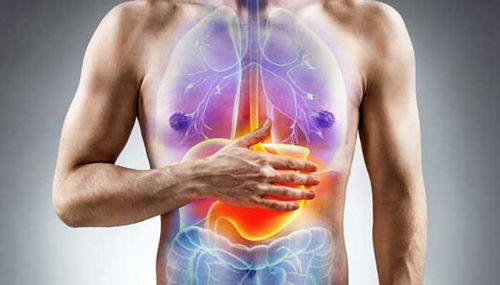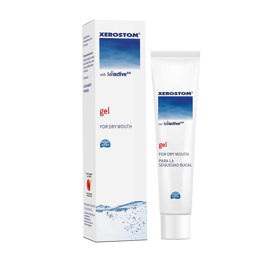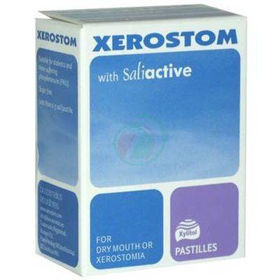Sjogren's syndrome is a chronic inflammatory disease characterized by dry mucous membranes in the eyes, mouth, and elsewhere. It is often associated with symptoms typical of rheumatoid arthritis or systemic lupus erythematosus.
SJOGREN SYNDROME: General | Symptoms | Diagnosis | Prognosis and Treatment | Mixed connective tissue disease | Questions and Answers | Sources/references
It is considered an autoimmune disease, but the cause is unknown. It is less common than rheumatoid arthritis and is more common in women than in men.
Leukocytes infiltrate glands that secrete fluids, including salivary glands in the mouth and lacrimal glands in the eyes.
Image: There is no cure for Sjogren's syndrome, but it is possible to relieve the symptoms with treatment.
.jpg)
The leukocytes of the glands malfunction, resulting in dry mouth and dry eyes. The mucous membranes that cover the gastrointestinal tract, trachea, external female genitalia, and vagina can also dry out.
Symptoms
Some patients only have dry mouth and eyes. Dry eyes can cause severe damage to the cornea, and lack of tears can cause permanent visual impairment. Due to the lack of saliva in the mouth, taste and smell are dulled, the patient has difficulty swallowing, and ulcers may develop.
In other patients, many organs are affected. Drying the trachea and lung lining increases the possibility of infection; pneumonia may develop. Inflammation of the pericardium - pericarditis - is also quite joint. Nerves can also be damaged, especially the facial nerves.
Image: Ulcers can form due to lack of saliva.

The disease can also affect the liver, pancreas, spleen, kidneys, and lymph nodes. Arthritis occurs in about a third of patients, affecting the same joints as in rheumatoid arthritis, but the inflammation is usually milder and not destructive.
Diagnosis
A dry mouth, eyes, and joint inflammation patient probably has Sjogren's syndrome. Various tests help the doctor in diagnosis. The amount of tears is checked by examination with filters and paper placed under the lower eyelid and how much the strip is moistened (Schirmer's test). Sjogren's syndrome patients produce less than a third of the average amount. He examines the eyes to detect damage to the ocular surface.
He can also carry out more complex saliva secretion tests and order a scintigraphy or biopsy of the salivary glands. Blood tests can detect abnormal antibodies. The sedimentation rate of erythrocytes is increased in 7 out of 10 patients; a third have a reduced number of red blood cells (anemia) or specific white blood cells.
Prognosis and treatment
Prognosis depends on the ability of antibodies to damage vital organs. It rarely ends in death from pneumonia, kidney failure, or lymphoma. There is no cure for Sjogren's syndrome, but symptoms can be alleviated with treatment. Artificial tears help with dry eyes. Patients keep their dry mouths moist by taking small sips of liquid, chewing sugar-free chewing gum, or rinsing their mouths.
Video content: 10 signs of Sjogren's syndrome.

They should avoid drugs that reduce the amount of saliva, such as decongestants and antihistamines. The drug pilocarpine stimulates the secretion of saliva if the salivary glands are not too severely damaged. Patients can help prevent dental disease and tooth loss through careful oral hygiene and frequent visits to the dentist. Pain and swelling of the salivary glands are treated with analgesics.
Joint problems are mild, so acetylsalicylic acid and rest are usually sufficient for treatment. If the patient has symptoms due to damage to the internal organs, taking a corticosteroid, e.g., prednisolone, can help.
Mixed connective tissue disease
Mixed connective tissue disease combines symptoms similar to many other diseases: systemic lupus erythematosus, scleroderma, polymyositis, and dermatomyositis.
Questions and answers
How common is Sjogren's syndrome?
Sjogren's syndrome is far from a rare disorder, with an incidence approaching one-half that of rheumatoid arthritis (RA) or affecting 0.5% to 1.0% of the population. Between 400,000 and 3.1 million adults have Sjögren's syndrome[1].
What causes Sjogren's syndrome?
Researchers don't know what causes the immune system to turn on the body, but they believe genetic and environmental factors are involved. Studies have linked Sjögren's syndrome to variants in several genes, many of which are involved in immunity[2].
Is Sjogren's syndrome an autoimmune disease?
Sjögren's syndrome is a chronic (long-term) autoimmune disorder[1].
Is Sjogren's syndrome curable?
There is currently no cure, but there are treatments that can help relieve symptoms[3].
What are the first symptoms of Sjogren's syndrome?
Symptoms include:
- dry eyes
- dry mouth
- dry skin
- fatigue
- vaginal dryness
- muscle or joint pain
- swelling between the jaw and ears (swollen salivary glands)
- rash (especially after sun exposure)[3]
Sources and references
An extensive health manual for home use, Youth Book Publishing House
- Sjogren Syndrome - https://www.ncbi.nlm.nih.gov
- Sjögren's Syndrome - https://www.niams.nih.gov
- Sjögren's syndrome - https://www.nhs.uk













